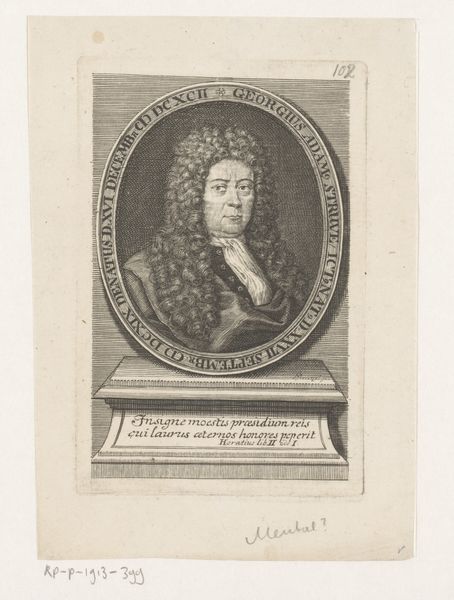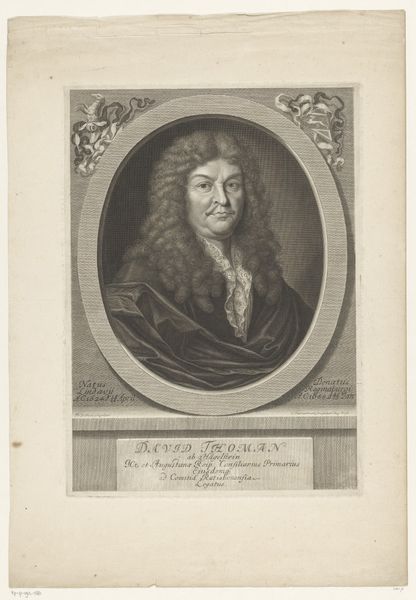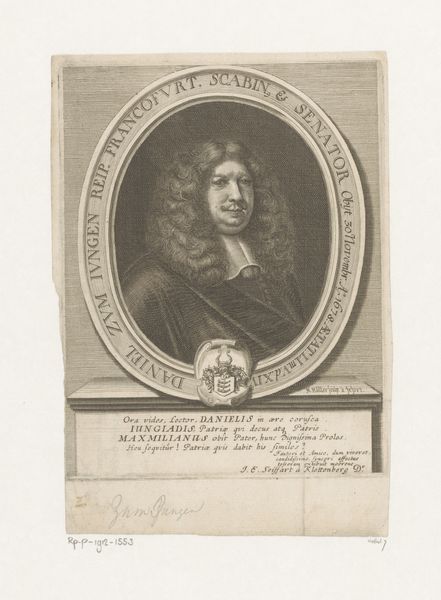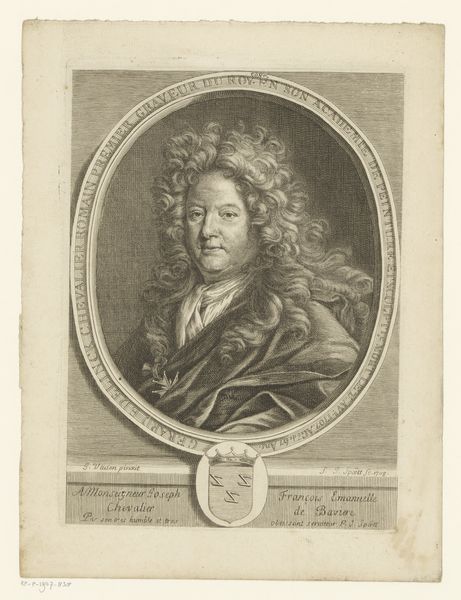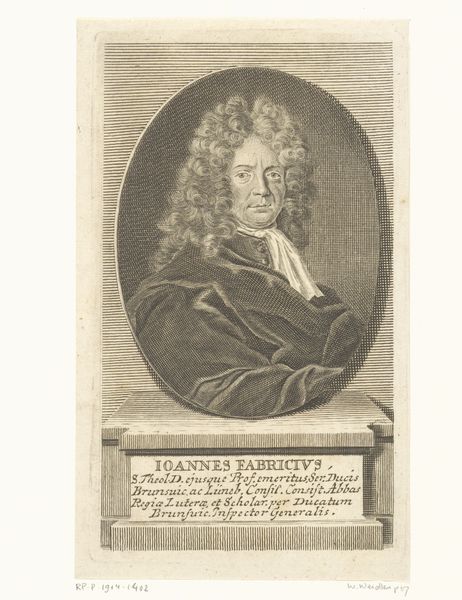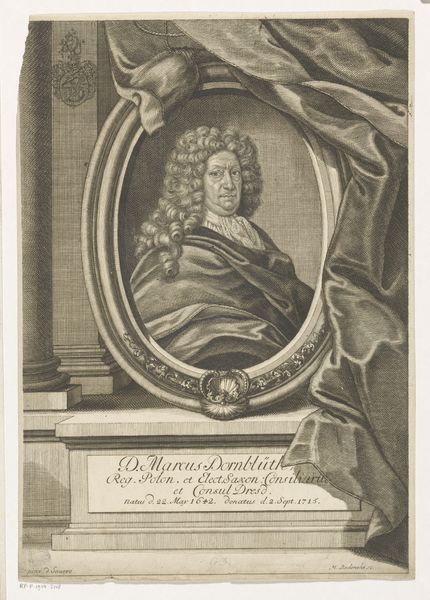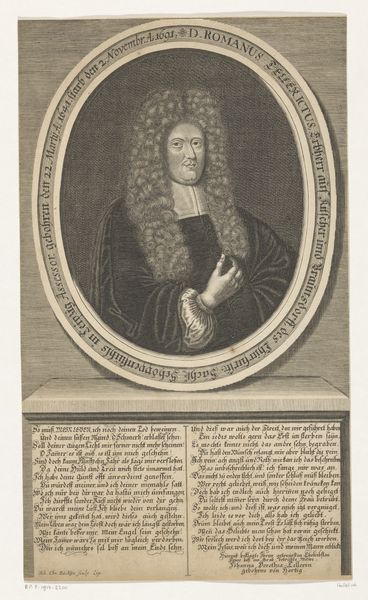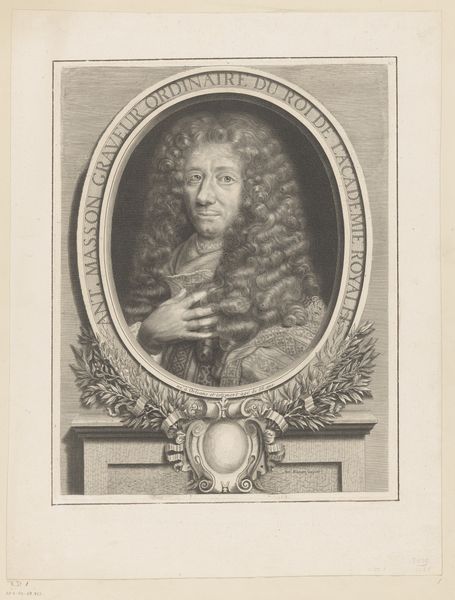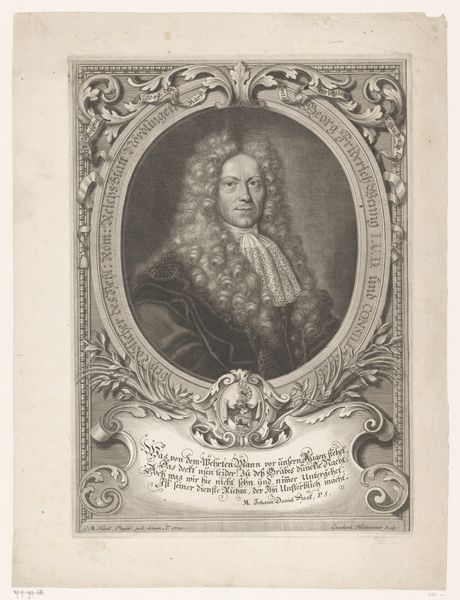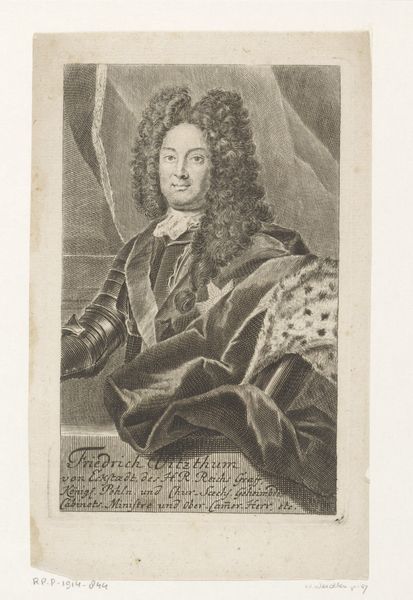
engraving
#
portrait
#
baroque
#
old engraving style
#
history-painting
#
engraving
Dimensions: height 265 mm, width 172 mm
Copyright: Rijks Museum: Open Domain
Editor: This engraving, titled "Portret van Hiob Ludolf," created between 1671 and 1704 by Johann Georg Göbel, strikes me with its formality. It’s very much of its time, and it really emphasizes the importance of the sitter. The intricate detail and the oval frame make it feel both grand and personal. How would you interpret this piece within its historical context? Curator: It's important to understand the power dynamics at play in portraiture during this era. Consider the relationship between the artist, the sitter, and the intended audience. Engravings like this one, distributed publicly, were potent tools for shaping reputation and reinforcing social hierarchies. Note how the inscriptions frame the portrait, literally and figuratively placing Ludolf within a specific historical narrative. Does this imagery resonate with other depictions of power during this period? Editor: That's interesting. I hadn't thought so much about it being a tool for shaping someone's reputation. So, the text surrounding the image, almost like a frame, plays a critical role then, not just as decoration, but as active messaging? Curator: Precisely. Think about what values they're trying to convey. How is Ludolf being presented, and to what end? Who controlled the narrative then, and how is this controlled visual narrative seen in today’s environment of ‘anyone can post anything?’ What does it reveal about the priorities of the elite class and the strategies used to maintain their authority? Consider how this image might have been perceived and used differently across various social strata. Editor: I guess I always considered the text to be somewhat secondary, but now I see how integral it is in shaping public perception and really reinforcing a very specific message. The control then and the cacophony now... quite the contrast! Curator: Indeed, reflecting on the visual rhetoric of this era offers insight into the enduring strategies of power and representation, and reminds us of the importance of analyzing images within their historical, social, and political contexts.
Comments
No comments
Be the first to comment and join the conversation on the ultimate creative platform.
